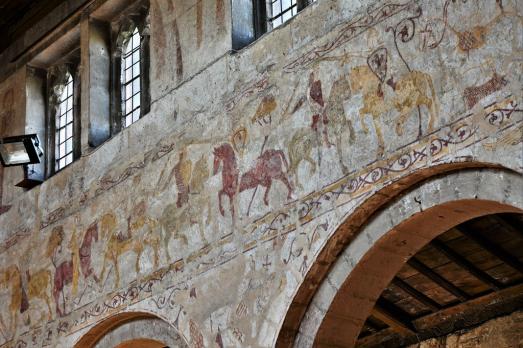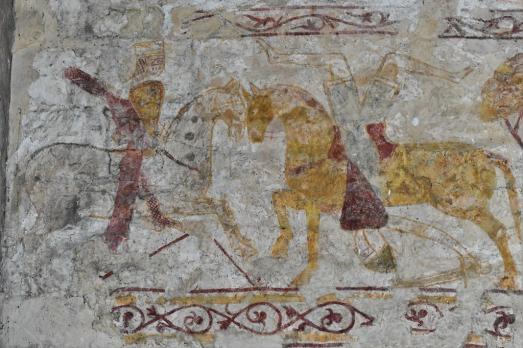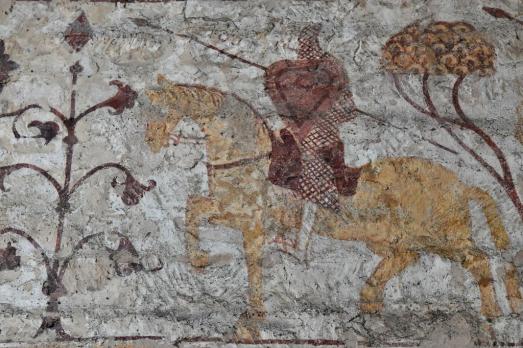The chancel is believed to stand on Roman foundations, and the oldest visible parts of the building are early Norman.
Inside, the north arcade is Norman and the south gothic. The long chancel, of 14th century date, suggests that this was a church of importance, a fact borne out by the varied collection of 15th and 16th century monuments to distinguished local families.
Today, visitors travel here to see the outstanding medieval wall paintings, especially the long, early 13th century frieze high on the north wall of the nave. With its representations of battling knights on horseback, it has been compared in style to the Bayeux tapestry.




